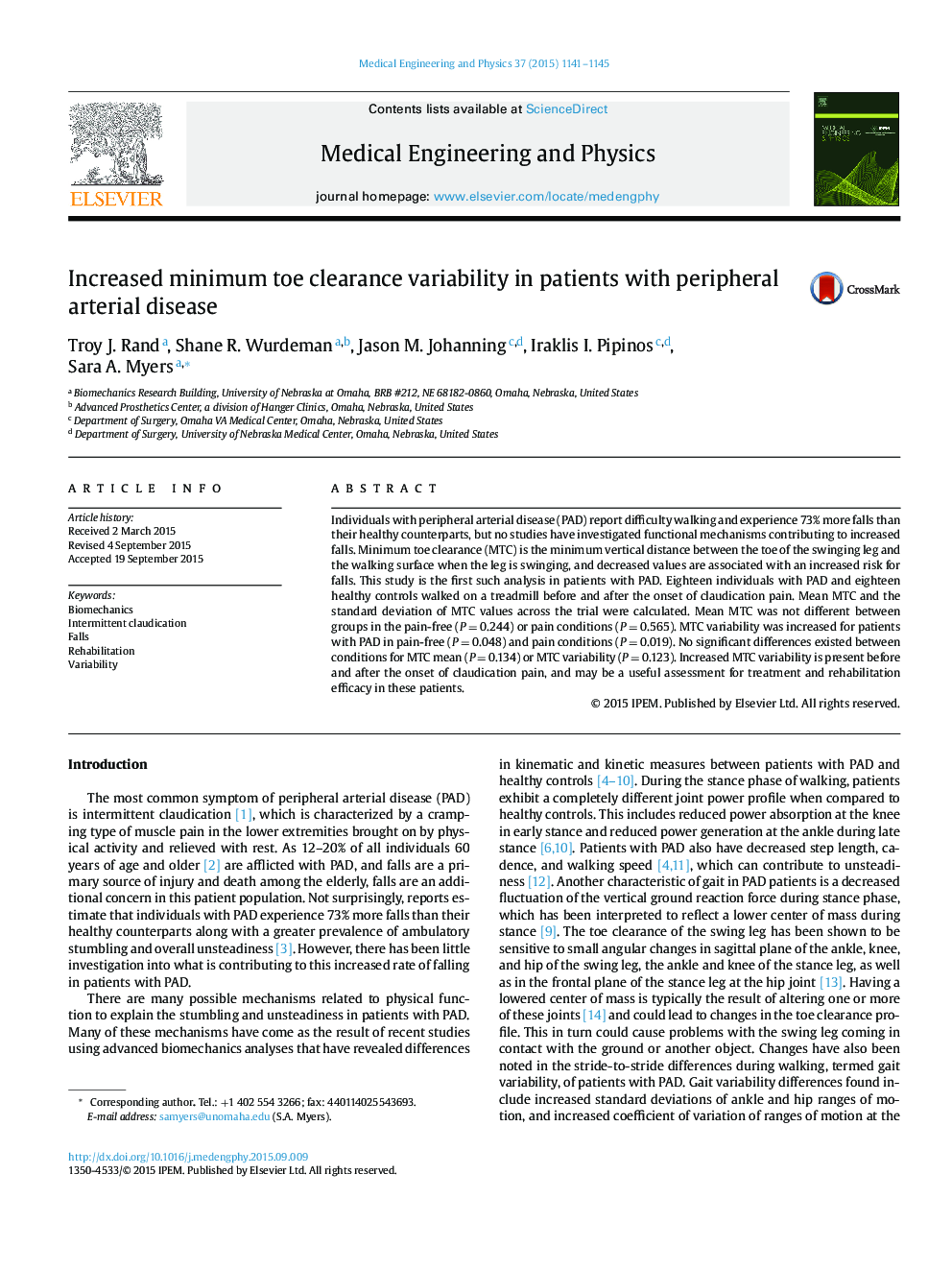| Article ID | Journal | Published Year | Pages | File Type |
|---|---|---|---|---|
| 875689 | Medical Engineering & Physics | 2015 | 5 Pages |
•Abnormalities in minimum toe clearance (MTC) are proposed as a potential mechanism for increased falls in patients with peripheral arterial disease (PAD).•Mean MTC and MTC variability were examined in healthy people and patients with PAD.•No differences were found for mean MTC, but PAD had increased MTC variability when walking prior to and after the onset of claudication pain.•Increased MTC variability could contribute to the higher prevalence of falls in patients with PAD.
Individuals with peripheral arterial disease (PAD) report difficulty walking and experience 73% more falls than their healthy counterparts, but no studies have investigated functional mechanisms contributing to increased falls. Minimum toe clearance (MTC) is the minimum vertical distance between the toe of the swinging leg and the walking surface when the leg is swinging, and decreased values are associated with an increased risk for falls. This study is the first such analysis in patients with PAD. Eighteen individuals with PAD and eighteen healthy controls walked on a treadmill before and after the onset of claudication pain. Mean MTC and the standard deviation of MTC values across the trial were calculated. Mean MTC was not different between groups in the pain-free (P = 0.244) or pain conditions (P = 0.565). MTC variability was increased for patients with PAD in pain-free (P = 0.048) and pain conditions (P = 0.019). No significant differences existed between conditions for MTC mean (P = 0.134) or MTC variability (P = 0.123). Increased MTC variability is present before and after the onset of claudication pain, and may be a useful assessment for treatment and rehabilitation efficacy in these patients.
